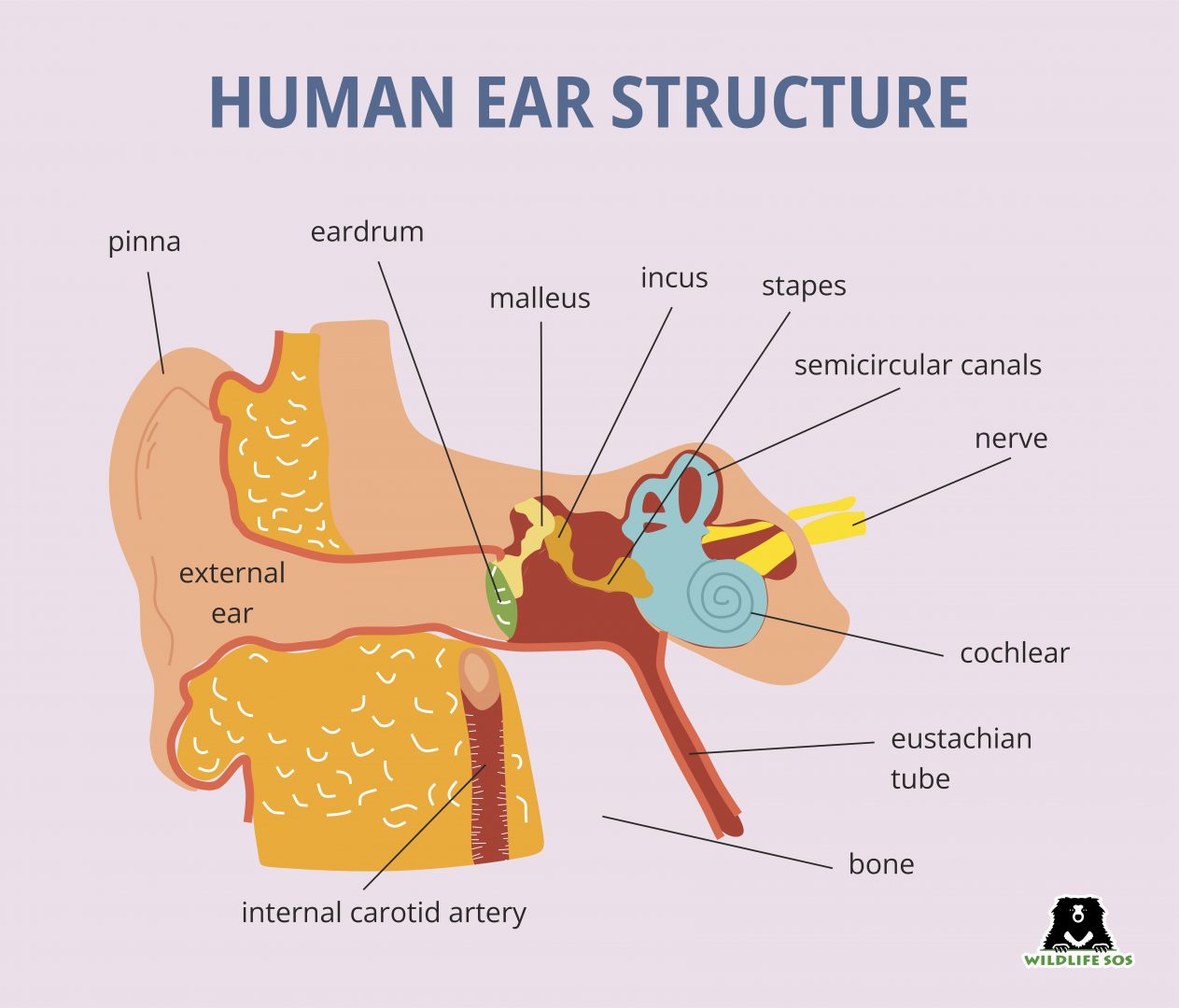When working in a corporate environment, you may often have an urge to know what your boss says about your work while in a meeting. Eavesdropping, however, can be too risky. A human being can hear sounds that range from 20 to 20,000 hertz (Hz). But what if you had a hearing range of 40 to 60,000 Hz? This could help you to listen to conversations across the office while reclining in your office chair.
You’ll be impressed to know that there is a being, perhaps lurking under your desk, who can actually hear such frequencies — your pet dog has an extraordinary ability to hear from far off distances, and even sounds that are as low as minus 15 decibels! But dogs are not the only animals who have impressive hearing, there are many more that can listen to ranges below and beyond what a human can, with (and without) their visible ears. Before we delve into different kinds of animals with extraordinary hearing ability, let’s get to know about the two types of sound that have been classified according to the hearing range of human beings.
Infrasound: Low-frequency audible sound that is usually below 20 Hz is called infrasound. Winds, storms, earthquakes, and even volcanoes can produce infrasound. Interestingly, some species, such as elephants, can communicate with one another via infrasound. Research conducted on animal hearing has suggested that their ability to hear infrasound could be the reason why they are alert of a natural calamity before it strikes.
Ultrasound: Audible sound of high frequency that is above 20,000 Hz is known as ultrasound. Species such as birds, bats, and dolphins are known to hear and produce sound at these levels. Sounds created at high frequencies have proven helpful for humans to use it for significant medical purposes.
Both infrasound and ultrasound lie beyond the two ends of human hearing range, and are therefore inaudible to us. Now that we are aware of the two extremities of sound range, let’s dig deep into the hearing capacity of various animals.

Frogs
People commonly assume that frogs can’t hear since they don’t have visible outer ears, but the truth is that they can hear much better than humans do! In fact, unlike humans who can localise sounds based on the volume at which it lands on both ears, frogs can determine sound depending on the difference in the time it takes for it to arrive on their eardrums. While we rely on the latest headphones to blur external noise, a particular frog species has been found to have a unique ability to do so. The lungs of tree frogs have an inbuilt noise cancelling ability, allowing these frogs to hear the love calls of potential partners over every other sound. This natural feature is based on a lung-to-ear sound transmission channel that is specific only to amphibians.
Scientists have found that when the lungs of tree frogs expand while making a call, their eardrums vibrate less in reaction to unwanted sounds that they can hear in the same frequency range. This indicates that they pick up only those mating calls that come from their own frog species. Researchers have also documented the fascinating communication abilities of the Huia cavitympanum, a frog species native to the island of Borneo in South Asia. This frog, also called hole-in-the-head frog, is the only known frog species capable of using ultrasonic calls that are beyond the range of human hearing.
Elephants
Elephants can both hear and produce infrasound at frequencies as low as 5 Hz. They can communicate by producing low-frequency sounds that can travel dozens of kilometres underground. The sound waves are produced by the elephants’ massive voice cords, and distant elephants can hear the messages with their extremely sensitive feet! Seismic vibrations produced by elephant rumbles and stomps are carried through the ground to “ping” elephants that may be 30 odd kilometres away.
By using both ears and their feet, the elephants can tune in to sound waves carried through the ground as well as the air to understand the direction, distance, and content of the communication. Mammals, including humans, have Pacinian corpuscles on their skin that are able to sense vibrations. These cells for elephants are concentrated near the edge of their feet and at the tip of their trunks. By pressing them against the ground, these corpuscles send effective signals to the elephant’s brain for it to process them.
Snakes
Though snakes don’t have visible ears, they have the ability to feel and listen to the rhythm of the earth beneath them. Snakes are less sensitive to airborne sounds and are more in tune with the ground beneath them. A loud sound emerging from above the snake may not make it flinch, but a vibration from the ground would surely provoke the snake to react by moving its head or flicking its tongue. These sounds are deciphered by snakes through bone conduction. The sound vibrations travel through their lower jaw, which is typically in contact with the ground, then to the quadrate bone (bone on the upper jaw that joins the skull), and finally to the stapes (the middle ear bones). Even burrowing lizards have a fantastic ability to hear in the same way.
Owls
Owls possess a superior hearing range compared to other birds, spanning from 200 to 12,000 Hz. They have an uncanny ability to eavesdrop on the secrets of night, making their extraordinary hearing skills their key to survival. By keenly detecting even the faintest of sounds, owls can locate their next meal from a distance and pounce on it with incredible speed, catching their prey off-guard.
For several owls, the ears on the sides of their eyes are a dynamic duo, as one of their ears is placed higher than the other. This asymmetrical placement of ears helps them to precisely locate their prey by comparing the sound levels picked up by each ear. It’s like a built-in GPS for them! Owls don’t have external ear flaps (pinnae) that humans use to amplify sounds. Their ears are wrapped in feathers instead, and these not only help in guiding sounds to the ear canal, but also protect them from the loud wind sounds as they fly.
We have explored how animals like frogs, elephants, snakes, and owls perceive sound from the environment in fascinating ways. Animals not only have a distinct ability to hear, but also an exceptional eyesight! To read more of such interesting articles on wildlife, subscribe to our newsletter by clicking here.





